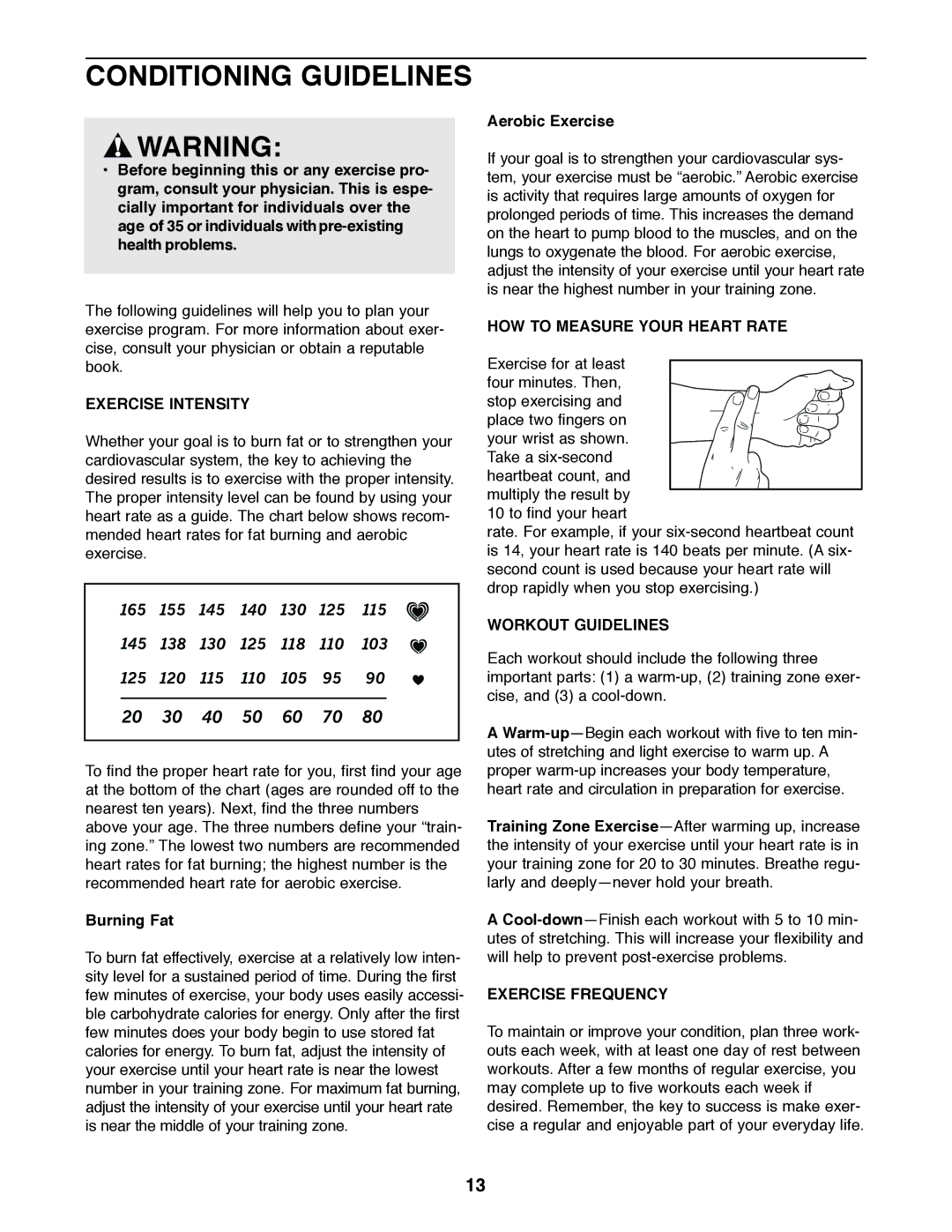
CONDITIONING GUIDELINES
![]() WARNING:
WARNING:
•Before beginning this or any exercise pro- gram, consult your physician. This is espe- cially important for individuals over the age of 35 or individuals
The following guidelines will help you to plan your exercise program. For more information about exer- cise, consult your physician or obtain a reputable book.
EXERCISE INTENSITY
Whether your goal is to burn fat or to strengthen your cardiovascular system, the key to achieving the desired results is to exercise with the proper intensity. The proper intensity level can be found by using your heart rate as a guide. The chart below shows recom- mended heart rates for fat burning and aerobic exercise.
To find the proper heart rate for you, first find your age at the bottom of the chart (ages are rounded off to the nearest ten years). Next, find the three numbers above your age. The three numbers define your “train- ing zone.” The lowest two numbers are recommended heart rates for fat burning; the highest number is the recommended heart rate for aerobic exercise.
Burning Fat
To burn fat effectively, exercise at a relatively low inten- sity level for a sustained period of time. During the first few minutes of exercise, your body uses easily accessi- ble carbohydrate calories for energy. Only after the first few minutes does your body begin to use stored fat calories for energy. To burn fat, adjust the intensity of your exercise until your heart rate is near the lowest number in your training zone. For maximum fat burning, adjust the intensity of your exercise until your heart rate is near the middle of your training zone.
Aerobic Exercise
If your goal is to strengthen your cardiovascular sys- tem, your exercise must be “aerobic.” Aerobic exercise is activity that requires large amounts of oxygen for prolonged periods of time. This increases the demand on the heart to pump blood to the muscles, and on the lungs to oxygenate the blood. For aerobic exercise, adjust the intensity of your exercise until your heart rate is near the highest number in your training zone.
HOW TO MEASURE YOUR HEART RATE
Exercise for at least four minutes. Then, stop exercising and place two fingers on your wrist as shown. Take a
rate. For example, if your
WORKOUT GUIDELINES
Each workout should include the following three important parts: (1) a
A
Training Zone
A
EXERCISE FREQUENCY
To maintain or improve your condition, plan three work- outs each week, with at least one day of rest between workouts. After a few months of regular exercise, you may complete up to five workouts each week if desired. Remember, the key to success is make exer- cise a regular and enjoyable part of your everyday life.
13
